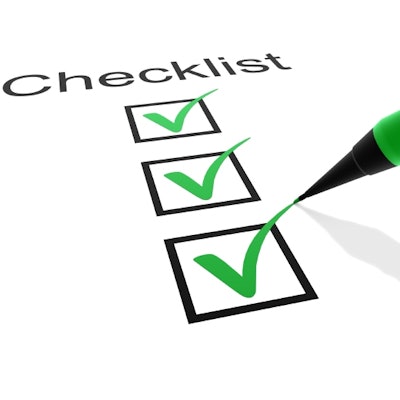
Has the flurry of legislative and regulatory activity over the past two months left your head spinning? You're not alone.
 Rebecca Farrington from Healthcare Administrative Partners.
Rebecca Farrington from Healthcare Administrative Partners.Some funding, such as the $30 billion distribution of funds under the Coronavirus Aid, Relief, and Economic Security Act (CARES) Act, came to practices automatically and unexpectedly, while other sources, such as the Paycheck Protection Program through the Small Business Administration (SBA), have taken a lot of work with little result so far.
We reviewed as many federal programs as possible in our recent articles HHS Provider Relief Payment and Your Radiology Practice and What We Know -- Federal Relief Programs That Could Assist Radiology Practices, and additional funding has been promised. Practice managers have to be aware of the follow-up steps that are required after the receipt of money from any of these funding sources.
Department of Health and Human Services (HHS) grant fund
Most practices received a direct deposit into their bank account on Friday, April 10, as we reported in our article. In most cases, no repayment of these funds will be required, but practices should carefully review the terms and conditions associated with receipt of the funds. The grant requires the practice to accept the funds by accessing an online portal within 30 days of receiving the funds and attesting to the practice's agreement with the terms and conditions of the grant.
Failure to affirmatively attest via the portal will be considered acceptance of the terms and conditions by the practice. If the total received by the practice through any and all portions of the CARES Act exceeds $150,000, then quarterly reporting will be required.
Paycheck Protection Program (PPP) loan
If your practice was lucky enough to receive funding through the SBA, the next step is to be sure to spend it carefully and to document the use of the money. To the extent it is used for the intended purposes outlined in the CARES Act, the loan will be forgiven; however, any amounts unspent or spent for other purposes will have to be repaid over two years with interest at 1% per annum.
The loan forgiveness covers expenditures during the eight-week period that begins when the loan funds are received by the practice. At least 75% of the funds must be used for payroll (not to exceed an annual salary of $100,000) and related costs such as health insurance, retirement plan contributions, and state or local payroll tax expenses. The remainder can be used for mortgage interest, rent, and utilities. Note that the amount paid to employees for emergency paid sick leave and emergency family leave, described below, do not count toward ongoing payroll costs for loan forgiveness purposes.
The count of full-time equivalent (FTE) employees has to be maintained at the same level as it had been over the preceding 12 months, or optionally for the year 2019, otherwise the amount of loan forgiveness will be reduced. Practices have the opportunity to rehire employees through June 30 in order to restore their head count and avoid the reduction of loan forgiveness.
Many questions remain about how the actual loan forgiveness will be calculated. The parameters used to determine the loan amount in the application process are different from those being used in the loan forgiveness calculation. For example, the application requested an estimate of 2.5 months of expenses, while the spending period is eight weeks, or only about two months. The result is that the loan received could be more than the practice can spend in the allotted time frame. Therefore, the difference can either be refunded to the bank immediately or paid off over two years with interest.
Emergency paid sick leave and emergency family leave
Businesses are required to provide up to 80 hours of paid sick leave at full pay for certain reasons during this public health emergency, as well as up to 12 weeks of emergency family leave at two-thirds pay for other reasons, as outlined in our recent article.
However, medical practices are exempted from the requirement if they so choose. Practices that choose to participate must keep track of the amount paid to those employees who are on leave and then reduce the amount they otherwise would pay in federal payroll taxes, as reimbursement for the cost of the paid leave. If the amount obtained from such tax forgiveness is not enough to cover the cost, then a refund will be made from the federal government.
Employee retention credit and delayed payment of payroll taxes
For practices that are not participating in the PPP loan, payroll tax credits are available for retaining employees. There is also the opportunity to defer payment of employer Social Security tax through December 2022. Both of these CARES Act programs are described in our article.
Action steps
Careful compliance with the regulations, along with good recordkeeping and documentation, are critical to support your practice's ability to retain the funds provided under the CARES Act. The PPP loan requirements are especially tricky to understand, and clarification is being issued regularly. Consultation with your lending institution, along with your practice accountant and/or attorney, is recommended to be sure you obtain the most loan forgiveness possible. Here are some essential targets you will need to meet:
- Log in to the online portal to accept the HHS grant funds.
- Establish a system that will allow you to track the use of PPP funds. Many consultants recommend establishing a separate bank account for the PPP funds.
- Be aware of the eight-week PPP spending period that begins on the day the funds are deposited into your account.
- Spend the PPP money only on allowable expenses -- eligible payroll, employee benefits, state and local payroll taxes, mortgage interest, rent, and utilities.
- Eligible payroll includes only the first $15,385 paid to an employee during the eight-week period, and it does not include emergency paid sick or family leave.
- Review the practice's head count and rehire before June 30 any employees who were laid off after February 15.
- Carefully document the reasons staff are on leave to be sure they qualify under the Families First Coronavirus Response Act (FFCRA) rules for reimbursement. Many consultants recommend a form signed by the employee to document their leave. Monitor the length of time they are on leave and switch them to another status when FFCRA leave expires, when they might help you qualify for PPP loan forgiveness.
The landscape is changing constantly, and practices would do well to monitor any and all sources of information available to them. Note that nothing in this article should be construed as legal advice, and practices should consult with their accountants, attorneys, or other advisors as necessary. We will do our best to keep you apprised during this difficult time.
Rebecca Farrington serves as the chief revenue officer for Healthcare Administrative Partners. She has more than 20 years of experience in healthcare sales and management roles, focusing on hospital-based and physician revenue cycle management.
The comments and observations expressed are those of the author and do not necessarily reflect the opinions of AuntMinnie.com.



















